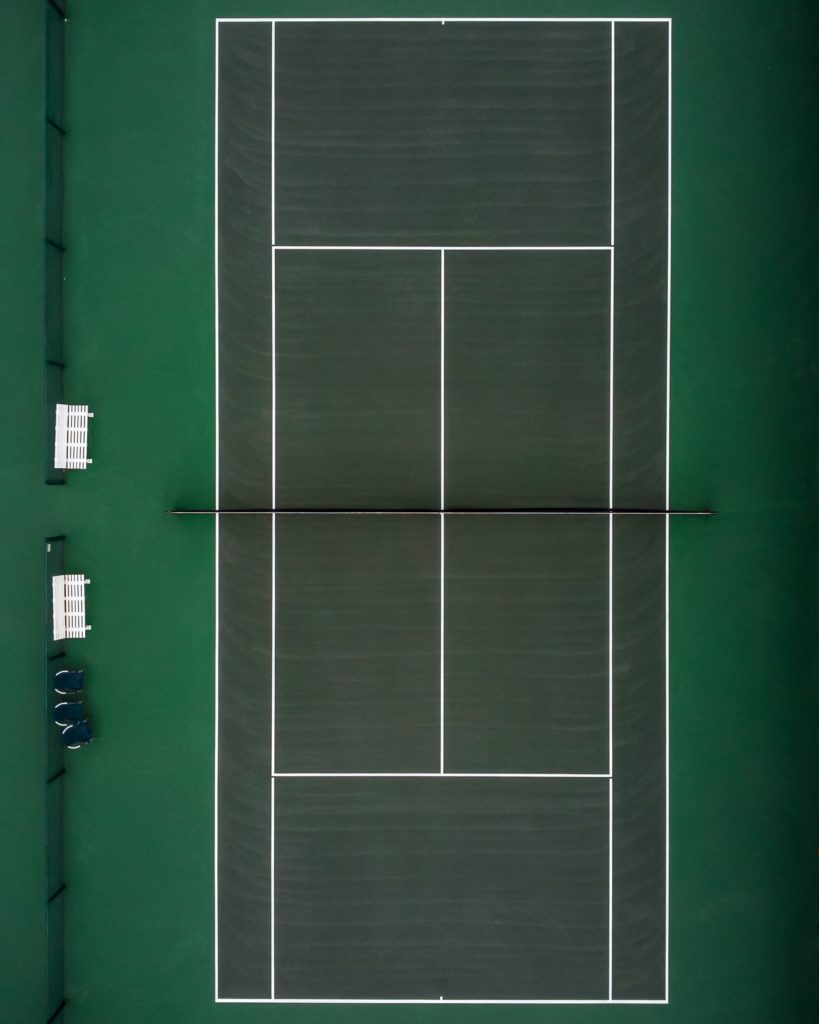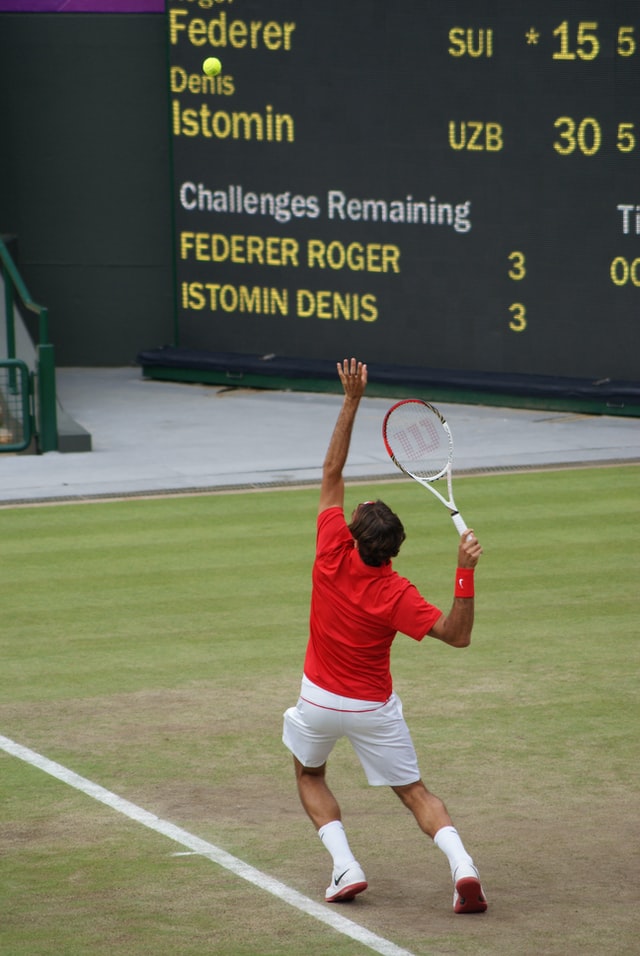Tennis, a sport that doesn’t seem complicated at first glance. You just play a ball back and forth over a net, right?
However, there is much more in terms of rules and techniques behind tennis. That is exactly what we will discuss in this article.
Table of Contents

The playing field
First of all it is important to understand the parts of the playing field. Make sure you understand these parts well before you start playing tennis.
- A tennis court consists of 2 halves which are separated by a net. This net hangs at a height of about 1 meter. It is very important that you are not allowed to touch the net while playing tennis, not even with your racket.
- Both halves are divided into a back box and 2 front boxes; also called service boxes. You can see this distribution clearly in the image below.
- In addition, there are lines that mark the boundaries of the playing field. As you can see below, these lines run on the sides of the playing field, there are 2 lines next to each other. Which one you use depends on the game type, we will come back to this later.

The serve
As you would expect, you try to get the ball into the opponent’s service box during the serve.
You start the serve behind the back line on the right or left side. Then you shoot diagonally into the opponent’s service box.
If your ball does not end up in the opponent’s service box, you speak of a wrong service. After a wrong service you can make 1 new attempt, if this service is wrong again the point goes to the opponent.
In addition, the ball may not touch the net during the service.
Opponents alternate serving a game. So you serve a whole game and you start from the right side with serving. After every serve you switch sides.
In tennis, both overhand and underhand can be served. In professional tennis you only see overhand serves, because in general you can hit harder with these type of serve.

Format of a match
To understand the format of a tennis match there are 3 important terms:
- Game
- Set
- Match
Game
A game is the smallest part in a tennis match and is won by achieving 4 points.
The scoring goes as follows; you start at 0 points, after obtaining a point you successively reach a score of 15, 30 and 40.
A difference of 2 points is needed to win the game.
If the score is 40-40, the one who scores the next point is placed on ‘advantage’. If he also scores the next point, he wins the game, otherwise it is 40-40 again.
Set
A set is won by the first to win 6 games. The same kind of rule applies here that the difference in games must be at least 2.
A score of 6-6 allows play to continue until a difference of 2 games is reached or a deciding game can be played.
Match
The winner of the match is determined by whoever wins 2 or 3 sets first.
In professional tennis you have to win 3 sets. In lower levels, 2 sets are more often chosen.
For clarification, this division is shown in a diagram below.
| First to win 2/3 sets -> Wins the match |
| First to win 6 games -> Wins a set |
| First to win 4 points -> Wins a game |
Different types of shots
- Forehand : With this shot you always use 1 arm and the top of the racket points to the side with which you hold the racket.
- Backhand : This shot can be performed with 1 or 2 arms. The top of the racket points in the opposite direction to which you are holding the racket.
- Volley : With this shot you hit the ball back in 1 go without the ball bouncing on your half.
- Smash : The smash is a hard shot in which the racket is held overhand. It is often the response to a high ball from the opponent and is often shot from a position close to the net.
- Dropshot : A dropshot is a soft ball that just goes over the net with the aim of making the opponent come to the net.

Singles or doubles
Tennis can be played with 2 or 4 people. As mentioned earlier, these 2 types use different boundaries of the playing area.
In singles the inner lines are used and in doubles the outer lines are used.
A number of extra rules play a role in doubles. First of all, at the serve, the person who does not serve stands on the other side and close to the net.
After the point is decided, you switch sides with your teammate.
Lifestyle coach [5+ years of fitness experience]